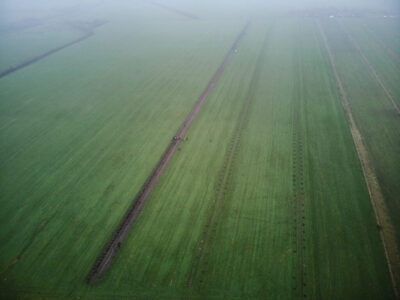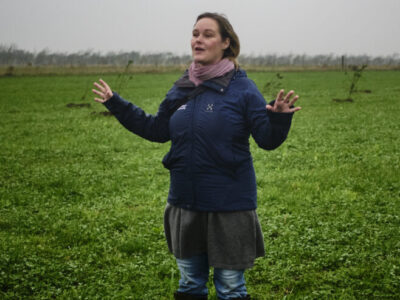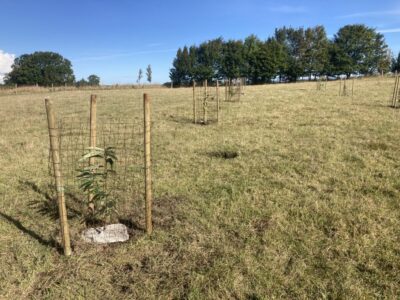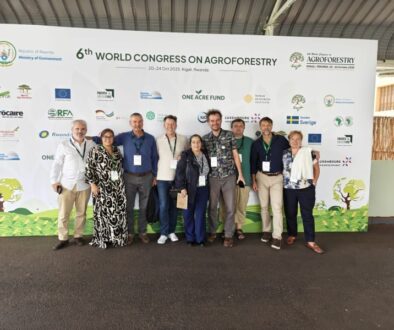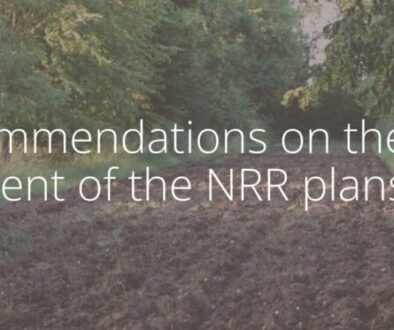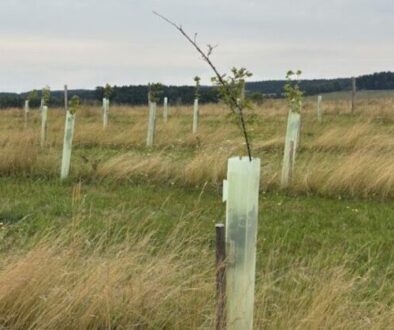2022 in the world of Danish Agroforestry
2022 in the world of Danish Agroforestry
by Julie Rohde Birk, Project Manager in Agroforestry at Innovation Center for Organic Agriculture, and national delegate to EURAF
When we took our first baby steps into the world of Agroforestry in 2017, not many believed in trees as part of rational, efficient agriculture. Nor had it occurred to many to compromise the intensity of modern agriculture by planting trees in the fields. Nevertheless, that was what we saw was beginning to happen in countries around us. In England my colleagues talked about 25% higher yields from these tree plantings and in France they whispered 36% in my ear. We naturally knew Agroforestry from tropical climates, where for years it has been an important tool for greater food security and protection of agriculture against climate change. But suddenly there were farmers doing Agroforestry in temperate climates. In fields like ours, they planted rows of trees, and the scientists followed them and were excited.
Fortunately, the Foundation for Organic Agriculture saw potential in our idea to investigate Agroforestry for Danish farmers, and with a grant from there, we were well underway in 2018. The rest is, as they say, history, which takes us to 2022. And what a year it has been. I have never been contacted by so many colleagues who want to work with, students who want to write about, and farmers who want to do Agroforestry. Agroforestry is no longer a small, weird idea, it is a serious, agricultural scientific field. And it has the potential to revolutionize the way we think about agriculture. In its structure, good Agroforestry contains elements that make room for nature, sequester carbon, increase animal welfare, optimize nutrient utilization, improve water availability, and protect against extreme weather. If Agroforestry is a large enough part of the total farm, there is a real potential for it to be enough of an initiative to create a farm that is in balance on all these points. And if the English and French are just a little bit right, we might even make money out of it.
2022 marked the halfway point for project ROBUST. The large flagship of a research project that will bring us closer to uncovering the potential of Agroforestry in our country has entered a phase where the results are beginning to show. We are in the process of interpreting data on the movement of cattle in forest systems with a view to learning more about how the trees best contribute to animal welfare. We have also received analysis results of the suitability of various tree species as fodder. In France, tree hay is used in the dry summer months, when the grass does not grow, and with climate change, it is not inconceivable that we will be able to use it in Denmark. Both winter and summer. But of course, this requires that we use species that the cows like and that the nutrient composition is in order. We will find out now.
We are also in the process of analyzes of nutrient and water cycles as well as carbon sequestration in trees. All central elements in the development of Agroforestry, since the best incentives for planting trees are the beneficial effects for society and the ecosystem services associated with them. Lack of knowledge about carbon sequestration in Agroforestry systems and with the species we use is one of the major challenges in the adaption of Agroforestry. With our work, we get one step closer.
Something has also happened at EU level in 2022, as each member state was tasked earlier in the year with defining subsidized for Agroforestry. It thus appears that from 2023 we will get a subsidy-eligible code for at least part of the new Agroforestry systems. Because the definition became quite narrow, we will see examples of Agroforestry systems having to be registered as something other than agroforestry, e.g., coppice forest.
2023 is another year of Agroforestry. Projects are started within all facets of Agroforestry, not least as European collaborations, where we pool our knowledge and learn from each other. I am happy to be involved in several, e.g., MIXED, which investigates Agroforestry and other mixed farming systems, and RE-LIVESTOCK, which deals with climate optimization of meat production, e.g., through Agroforestry. In Denmark, the demand for knowledge about Agroforestry is growing steadily among farmers, and I will do my utmost to keep the communication channel warm and send all new knowledge the way of the most important pioneers of Agroforestry – the farmers.
